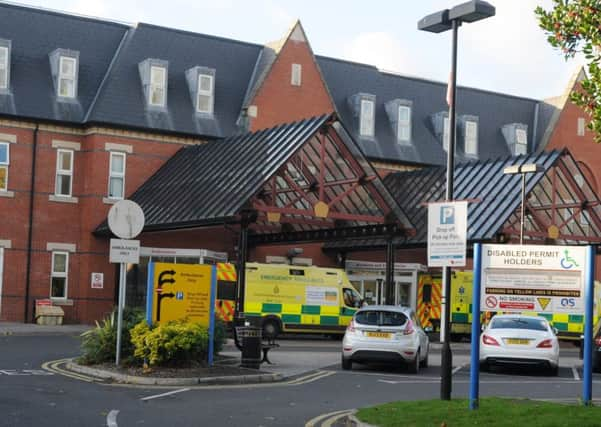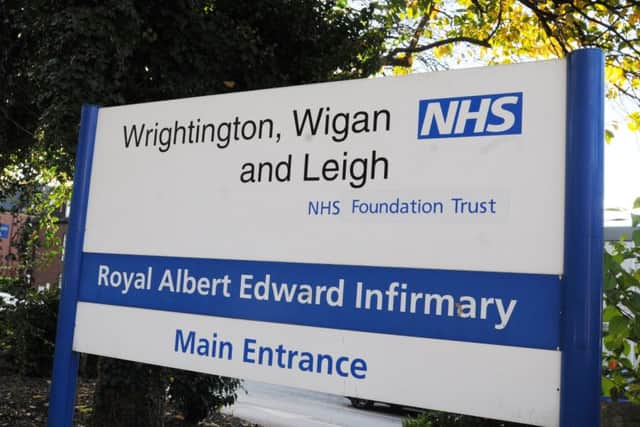The long wait goes on for patients at A&E unit


Wigan Infirmary failed to meet the target of 95 per cent of people being seen within four hours every month in 2016.
Its average for the year was 89.04 per cent, with the worst performance of 82.62 per cent in December.
Advertisement
Hide AdAdvertisement
Hide AdProvisional data shows it dropped even further to 76.59 per cent in January.


A report for Wigan Borough Clinical Commissioning Group’s governing body said 6,852 people attended A&E in January, but 1,604 did not leave within four hours.
Steps are being taken to improve waiting times, including the recruitment of a geriatrician to support the elderly in A&E, an out-of-hours service linked to nursing homes to prevent admissions and a review of staff sickness.
Patients requiring an ambulance to take them to A&E also faced longer waits.
Advertisement
Hide AdAdvertisement
Hide AdThe eight-minute response time was met for 60.7 per cent of urgent “red one” calls and 56.4 per cent of “red two” calls in December.


These performances were lower than in November and below the target of 75 per cent.
There is a 95 per cent target to respond to all red calls in 19 minutes. This was met 86.5 per cent of the time, a two per cent rise on the month before.
It took more than 30 minutes for paramedics to hand over 26.87 per cent of patients - far higher than the 5.3 per cent target and a rise from 23.11 per cent in November.
Advertisement
Hide AdAdvertisement
Hide AdAnd 10.46 per cent of patients waited more than 60 minutes, compared to 8.5 per cent the month before and the 0.7 per cent target.
A North West Ambulance Service spokesman: “Winter is traditionally our busiest time and this year was no exception as we experienced significant increases in demand. December, the festive and New Year periods were amongst the most challenging operating environment for us on record.
“This was due to not only the increase in 999 calls we were receiving, especially for those patients with a serious condition, but also in turn hospitals experienced increased pressures and our ambulance crews faced long delays to hand over patients.
“We strive to reach patients as quickly as possible but delays at hospitals adversely affect our ability to respond to other patients that are waiting in the community. This is not only frustrating for our patients but also for our hardworking staff.
Advertisement
Hide AdAdvertisement
Hide Ad“We robustly plan for winter pressures and constantly monitor ambulance handover times and are working closely with our NHS colleagues to address this issue.
“We do urge the public to continue to support us by only dialling 999 for life-threatening and potentially life-threatening incidents and to consider alternative pathways of care such as minor injury units, walk-in centres or visiting their GP or pharmacist in the first instance.”
Dr Tim Dalton, GP and chairman of NHS Wigan Borough CCG, said: “The A&E in Wigan struggled to treat all patients within four hours in December and January and we saw delays in ambulances arrivals and handovers. Winter was just extremely challenging with a lot of very ill patients visiting A&E and needing high levels of care from the doctors and nurses. Thanks to the hard work of the staff, despite the challenges they faced, they still managed to see over three-quarters of patients on time.
“When the system has a continued period of pressure, as it did in December, it takes time for it to recover. In January, the recovery was impeded by the spread of flu and norovirus, which led to staff illness and some wards being closed. These wards were re-opened as soon as it was safe and the whole health and social care system is working together to improve performance.”